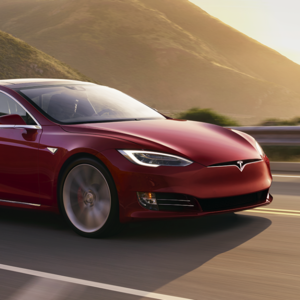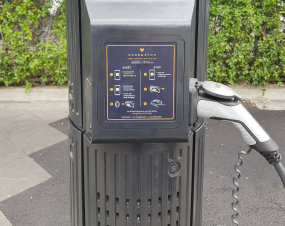Falling EV battery prices are a key factor in their growing popularity worldwide, but what goes into that cost? Is the dollar value all we should be looking at? Today on the JET Charge blog we examine the web of factors that go into battery tech, how they’re affecting the price and the performance of EVs today, and what’s next as li-ion technology is perfected and eclipsed.
State of charge
The lithium-ion batteries used in electric vehicles today are cheaper than they’ve ever been. A lot cheaper. EV news outlets were quick to report when a Bloomberg NEF report revealed battery prices had fallen 85% between 2010 and 2018.
And that trend is set to continue. Bloomberg projects a further reduction to the magic number of $100/kWh by 2025, the value which should see EVs equal the purchase price of combustion equivalents. For the total cost of ownership, EVs are expected to match combustion by 2022.
Price is the single largest determinant for many households’ vehicle choices, but it’s not enough to eliminate fossil fuel entirely. $/kWh is a valuable metric for most consumers, but it doesn’t quite capture the range of factors that make for an ideal EV battery.
Weight matters
The weight of an EV’s batteries plays a crucial role in its performance, its range, and its handling. The power required to shift a battery is directly tied to its weight, so the Wh/kg score of their packs is extremely important to automakers.
Exact values are kept closely guarded by most manufacturers, but estimates suggest that the Model 3 delivers approximately 250 Wh/kg, with Tesla hoping to push that value to 330 Wh/kg.

The range of future EVs will be closely tied to this figure. A number of industry projects are expressly targeted at achieving optimal weight efficiency. Swiss startup Innolith announced their successful creation of a 1000 Wh/kg battery in April, a value far exceeding anything seen before with lithium-ion.
According to their press release, their battery is “the first non-flammable lithium-based battery for use in EVs”. Li-ion batteries used today use flammable organic electrolytes, where Innolith’s uses an inorganic variant that boosts capacity and eliminates fire risk.
The Swiss aren’t the only ones chasing superior efficiency. On May 21st, Tesla finalised their acquisition of Maxwell Technologies, a supercapacitor firm with a potentially cost-saving dry electrode technology. The ‘wet’ electrodes used in batteries today require expensive solvents that Tesla are likely eager to eliminate from their manufacturing.
Numerous others are investing heavily in solid-state batteries to do away with lithium-ion entirely. Solid-state technology has great potential for weight and cost-efficiency, up to double that of li-ion, but is projected to be up to a decade away from mass production viability.
Other potential candidates, including silicon and lithium-air technologies, are hamstrung by various drawbacks that keep them from being viable. It seems that li-ion will be powering EVs for at least the next few years.
With batteries currently making up approximately ~33% of the cost of an EV, any reduction should herald a strong benefit for consumers. Price parity isn’t far away, and the next big battery innovation might not be far behind.
Check back to the JET Charge blog for more EV news and updates.



